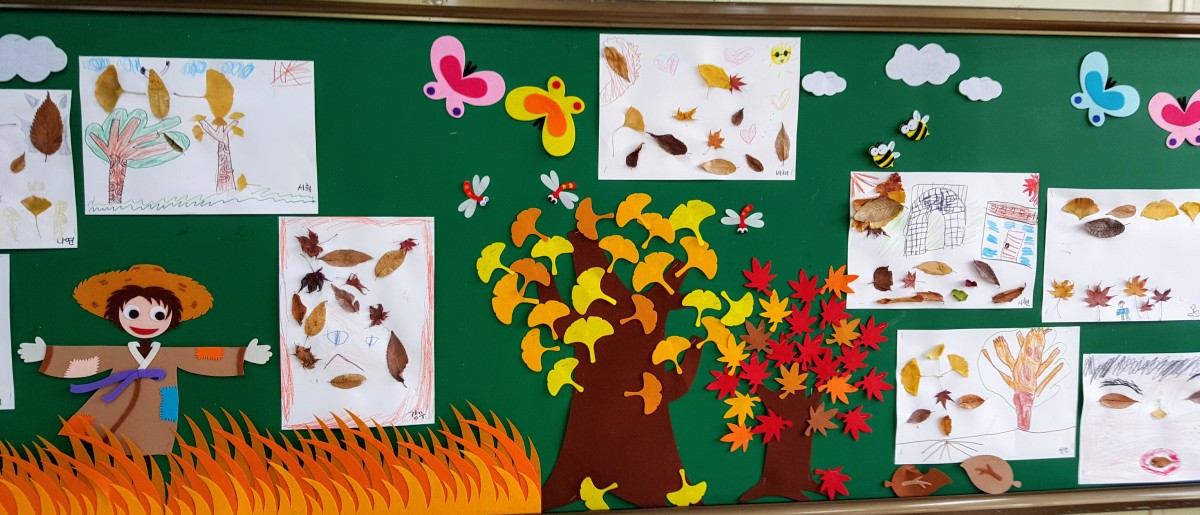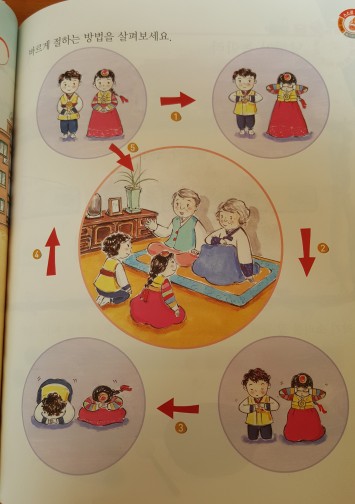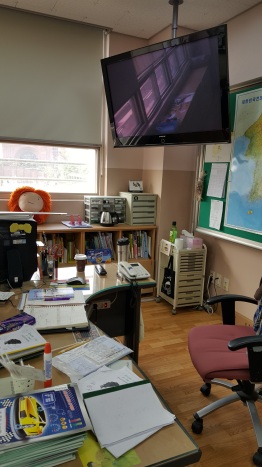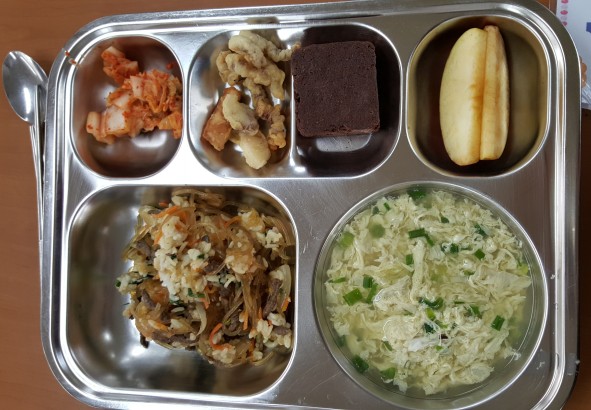All views and information presented herein are my own and do not represent the views of the Fulbright Program or the U.S. Department of State.
In a country of smartphones and social media where Internet service is free on the subways because it is as necessary as oxygen, it is as fast as a heartbeat because life depends on a tiny screen, where texting has taken over emailing and teachers and parents communicate constantly through their devices, the only computer in the first grade classroom is the teacher’s.
In a strange and refreshing way, at the elementary or primary grade levels, children are expected to be children. There is more time for play, to learn routines like cleaning the room, brushing their teeth, having a complete lunch and cleaning up after themselves. One teacher in the States asked me how do they manage to have the students be so independent in school when her students have still not mastered the routines – maybe the answer is a slower pace in the lower grades, less technology and more back to basics.

Kindergarten, elementary, middle and high school names of schools are always posted in the streets – it shows how essential school and eduction are to the nation’s life.
The elementary school featured on this blog is for grades 1-6. In some areas, the kindergarten building may be inside the “complex” but in a separate building or wing.

The writing on the bus says, 안전한 보행 walk safely – rule #1 for life at an elementary urban school. Each box has different rules that students must follow.
Each box has different rules that students must follow 지킬 일 -what you should do.Getting to school is a whole lesson in itself.
The building I visited is the “primary grades” building – grades 1-3. When school gets harder and harder, beginning in grade 4, textbooks and private academies –“hagwons” become as important as school and quickly take over the precious childhood and adolescent years but until then – education still acknowledges that cognitive development and readiness have to be there for children to excel. Based on my observations, that is what public schools are practicing today.

Part II describes those basic things that we teach at the lower grade levels.
Here are two definitions for primary/ elementary education and/or school that helped me to reflect on what we are trying to accomplish with and for our students from kindergarten to grade 3.
Elementary school – noun:
The lowest school giving formal instruction, teaching the rudiments of learning, and extending usually from six to eight years. http://www.dictionary.com/browse/elementary-school
Primary education:
Education which provides the rudiments of knowledge; early or elementary schooling; specifically (in the United Kingdom) the education of children between the ages of about five and eleven years. https://en.oxforddictionaries.com/definition/us/primary_education
The two definitions refer to the rudiments of learning or knowledge, they point to the basics and fundamentals of education.
In South Korea, kindergarten is not part of elementary school; it is a separate grade level since the expectations are very different from those in the United States. Children at this grade level are educated on those basic things that we teach at the lowest grade level when children begin their “scholastic lives”.
As the Korean government explains in its “Guide to School Admissions for Multicultural Families”, Kindergarten does not have an academic focus. This is how it is described:
- Unlike elementary, middle and high schools, kindergartens do not require textbooks.
- The daily school schedule includes activities such as optional activity, group activity, story sharing, field activity and outdoor activity.

When students get to first grade, they begin their “textbook” life. Slowly and incrementally, textbooks become the anchor and essence of education, in a way, they suffocate education but between grades 1-3, there is time for learning the basics of socialization, academics and a sense of history, belonging and tradition.

One of the main things children learn in first grade is “orthography” or handwriting and they do this by copying sentences in their “writing notebooks” which are exclusively for the skill of writing, of holding a pencil and tracing strokes, for making sure that those characters are readable to all.
Math is addition and subtraction of two digit numbers; it is mostly learning and practicing computational skills with some word problems.
Science and social studies are mostly related to learning about nature and their country’s history and traditions.
Technology is only an exposure, not a subject that requires time out of the schedule. As the teacher said, they have it at home and it is part of their private lives. I have not seen any tablets, laptops or computers in the classroom at any of the schools I have visited. Interactive boards and large screens are for the teacher’s use, students seldom used the boards for interactive work. Students go to a computer lab once a month in the lower levels to learn how to use a computer.

The photos are in the order of the day’s schedule, from physical education to lunch and dismissal. Music education for traditional Korean music was first period at 9:00 am. Of course, lunch is the one period that is worth thinking about seriously as it is not only the act of eating but it is so much more. Dismissal for Tuesday is after lunch.

Snack time, milk or yogurt- in the mornings for 20 minutes – provided by the government.
Read aloud of a story and instructions of how to copy the different sentences in sequence.
Free time or play time – students make their own choices.
Writing notes for home – they do the writing themselves old fashioned copying from the board in their notebooks.It takes time and it is not as expedient as a folder with teachers’ notes but it is another opportunity for practicing writing and responsibility.
Clean up time and getting ready for l
Lunch time – still in awe of how much there is to learn while we eat a balanced cooked lunch and also must clean up after ourselves. There is a nutritionist on staff to create the daily menu. She also walks around the lunch room asking students if they like the food and encouraging them to eat. Students are expected to eat all of their food – and they do. Notice that lunch today is soup with egg and tofu, chabche or noodles with rice , meat and vegetables, fried squid, kimchi, apples and chocolate brownie.

Dismissal – some students stay in school for after school until 5, others go home and others to private academies.





























HI Monica, I find the children’s day very interesting. I am especially intrigued by the lack of technology they are exposed to at an early age.
How are the children with special needs accommodated in Korea?
LikeLike
I am also intrigued and pleasantly surprised. Children with special needs can have an inclusive public school education, similar to that in the US or they can go to a special education school. Thanks for reading the entry!
LikeLike
A fascinating glimpse into another way of educating children! Thanks for taking the time to share all these details and really show what it is like in Korean schools.
LikeLike
I feel like I took a virtual trip! I’m learning about the school system through you. I do remember handwriting, art and “specials” were important when I was in pre-K. Still loving the photos of food…
LikeLike
Thank you, Monica, for taking my question of the children’s independence and digging deeper! I truly enjoyed this post and each time I read another one of your posts, I am amazed! I wish we had a slower pace here with kindergarten and could let the children “be children” more. Hope your turkey dinner with the other Fulbright students will be one that you will treasure forever!
LikeLike
Thank you for another wonderful post. This first grade schedule reminds me of the schedule kids had back in Russia when I still lived there. I think school days should be shorter and more productive. I also like the idea of minimum technology use in K and first grade. Kids are exposed to technology at their homes, and I think they should get a break from it while they are at school.
LikeLike
Thank you, Monica! I like the many ways that the students are taught to take responsibility for self as part of a group. It’s wonderful to see.
LikeLike